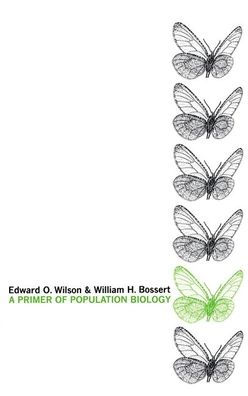A Primer of Population Biology
Designed to be self-teaching, A Primer of Population Biology shows how to apply simple mathematical models in population biology, shows how to construct such models, and provides a sense of the creative work in this field. Numerical problems throughout the text enable readers to test their growing mastery of the subject.
The major topics are population genetics, population and community ecology, and species equilibrium theory. Building from basic principles to advanced topics, the Primer fills a gap between introductory biology texts and advanced works in population biology. It can serve as a primary textbook for elementary courses in population biology. Or, in courses on genetics, evolution and ecology—where there is a need for all students to start at a reasonably high level of competence—it can serve as a supplementary text.
The Primer introduces many advanced topics at the elementary level without loss of rigor: genetic drift, measurement of rates of evolution, competition theory, reproductive value, and the theory of species equilibrium.
1101662301
The major topics are population genetics, population and community ecology, and species equilibrium theory. Building from basic principles to advanced topics, the Primer fills a gap between introductory biology texts and advanced works in population biology. It can serve as a primary textbook for elementary courses in population biology. Or, in courses on genetics, evolution and ecology—where there is a need for all students to start at a reasonably high level of competence—it can serve as a supplementary text.
The Primer introduces many advanced topics at the elementary level without loss of rigor: genetic drift, measurement of rates of evolution, competition theory, reproductive value, and the theory of species equilibrium.
A Primer of Population Biology
Designed to be self-teaching, A Primer of Population Biology shows how to apply simple mathematical models in population biology, shows how to construct such models, and provides a sense of the creative work in this field. Numerical problems throughout the text enable readers to test their growing mastery of the subject.
The major topics are population genetics, population and community ecology, and species equilibrium theory. Building from basic principles to advanced topics, the Primer fills a gap between introductory biology texts and advanced works in population biology. It can serve as a primary textbook for elementary courses in population biology. Or, in courses on genetics, evolution and ecology—where there is a need for all students to start at a reasonably high level of competence—it can serve as a supplementary text.
The Primer introduces many advanced topics at the elementary level without loss of rigor: genetic drift, measurement of rates of evolution, competition theory, reproductive value, and the theory of species equilibrium.
The major topics are population genetics, population and community ecology, and species equilibrium theory. Building from basic principles to advanced topics, the Primer fills a gap between introductory biology texts and advanced works in population biology. It can serve as a primary textbook for elementary courses in population biology. Or, in courses on genetics, evolution and ecology—where there is a need for all students to start at a reasonably high level of competence—it can serve as a supplementary text.
The Primer introduces many advanced topics at the elementary level without loss of rigor: genetic drift, measurement of rates of evolution, competition theory, reproductive value, and the theory of species equilibrium.
57.0
Out Of Stock
5
1

A Primer of Population Biology
192
A Primer of Population Biology
192
57.0
Out Of Stock

Product Details
| ISBN-13: | 9780878939268 |
|---|---|
| Publisher: | Sinauer Associates is an imprint of Oxford University Press |
| Publication date: | 06/01/1971 |
| Edition description: | New Edition |
| Pages: | 192 |
| Product dimensions: | 8.30(w) x 5.30(h) x 0.60(d) |
About the Author
From the B&N Reads Blog
